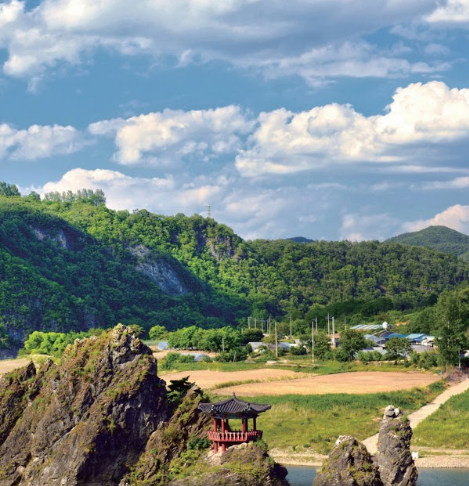GYEONGGI GRAND TOUR
The Gyeonggi Grand Tour encompasses 50 major tourist attractions and 147 auxiliary attractions in Gyeonggi-do, the province that circles Seoul and the Hangang River, which cuts across the center of the Korean Peninsula. The attractions, which are classified according to
INCHEON & GYEONGGI-DO
The city of Incheon and Gyeonggi-do Province, which surround the capital, are easily accessible by public transportation from Seoul and are home to countless tourist sites. Incheon is a port city located west of Seoul. Its port has served as
CHUNGCHEONGBUK-DO
Chungcheongbuk-do is an inland region surrounded by massive lakes and mountains. While it is smaller in size and population compared to other provinces, it is a great vacationing destination home to many natural attractions such as the “8 Sights of
JEJU ISLAND
Jeju is a volcanic island formed through ages of volcanic activity. Recognized for its unique volcanic landscape and biodiversity, the entire island and its lava tubes were designated a UNESCO World Heritage. It boasts an unrivaled natural scenery created by
GANGWON-DO
Gangwon-do Province, where more than 80% of the area is made up of mountains, is a much favored vacationing destination among locals. The clean beaches along the East Sea are popular summer resort areas, and although steep and challenging, the
ULSAN & GYEONGSANGNAM-DO
Situated along the southern coast of Korea, Gyeongsangnam-do Province is home to many beautiful coastal areas. Among them the Hallyeohaesang National Park is a marine park that offers scenic ferry tours around its islands. Tongyeong, which was a naval battleground
UNESCO WELTKULTURERBE IN KOREA
Everywhere in South Korea you can find the traces of 5,000 years of Korean history and the heritage of the past. There are a total of 13 UNSECO World Heritage Sites in Korea including “Buddhist Mountain Monasteries”, which was added
GROTTE SEOKGURAM & TEMPEL BULGUSKA
Seokguram Cave & Bulguksa Temple The Seokguram Cave and Bulguksa Temple were built in the middle of the 8th century, when art and culture of the Kingdom of Silla (57 BC – 935 AD) reached its peak. The grotto and
SCHREIN JONGMYO
Jongmyo Shrine Jongmyo Shrine preserves the tablets of the deceased kings and queens of the Joseon period. The shrine (p. 45) was built on the basis of the Confucian thought that honouring one’s ancestors is the most important virtue. The
JANGGYEONG PANJEON AT HAEINSA TEMPLE, THE PLACE WHERE THE WOODEN PANEL PRINTS OF TRIPITAKA KOREANA ARE KEPT
Janggyeong Panjeon in Haeinsa Temple, home of the wooden panel print of Tripitaka Koreana Tripitaka Koreana is kept in Haeinsa Temple (p. 158), which is one of the three largest Buddhist temples in Korea. Here are all versions of the






